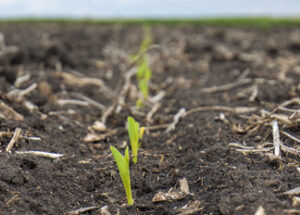
Understand Growing Degree Units
As the growing season begins the terms growing degree days (GDDs), growing degree units (GDUs), and heat units become quite common. These terms are often used interchangeably and applied to a variety of different subjects including crop growth stages and insect pests. What do these terms actually mean?
What are GDUs?
GDUs were developed as a way to quantify and measure the amount of heat a crop or pest has experienced in its lifetime. This is important because over the last few hundred years we have come to realize that heat is closely related to developmental stages in some organisms. Heat (or lack there of) determines the how quickly some biologic functions and chemical reactions occur.
A certain amount of these functions must occur before an organism reaches the next developmental stage in its life. GDU’s help us to quantify the speed at which these functions are occurring. This helps us understand what stage the crop or pest is in. It also predicts when the next stage is likely to occur. For example, corn will emerge after roughly 100 GDUs have been accumulated after planting. Soybeans need about 130 GDUs. Corn rootworms can be expected to begin to hatch after 500 heat units have been accumulated after January 1st.
Calculating GDUs
Calculating GDUs is a relatively simple process, albeit a time consuming one. The equation is as follows (Daily Maximum Air Temp °F + Daily Minimum Air Temp °F) / 2 – base temp = GDU. The base temp is determined by the organism you are specifically looking at. For corn and soybeans it is 50°F. Base temp is the temperature at which an organism begins to grow or develop and below it means no new development is happening. Crops and pests also have an upper limit temperature. When temperatures are above the upper limit no additional development is occurring because the organism is just in basic survival mode. This number is also determined by the crop/pest you are measuring. For corn and soybeans it is 86°F. When using the GDU equation, always use the base temp and upper limit as your input values when daily temperatures are outside of that range.
Tracking the accumulation of GDUs helps to predict stages such as emergence, silking, and black layer in corn. Different apps and online calculators can be used to help keep track of accumulation for a given area. Climate Fieldview can track GDUs on an individual field basis for corn when planting data in entered into the system. Most of our hybrids come with a predictive GDU value for 50% silking and also for black layer (physical maturity). These numbers can be found on their tech sheets.
Online GDU tool – https://hprcc.unl.edu/agroclimate/gdd.php
Corn stages and GDUs – https://www.corn-states.com/app/uploads/2018/07/corn-growth-stages-and-gdu-requirements.pdf
Insect GDU chart – https://www.extension.iastate.edu/winneshiek/sites/www.extension.iastate.edu/files/winneshiek/CropNotes/8.5%20x%2014%20insect%20pest%20scout%20calendar%20and%20DD%20info.pdf
